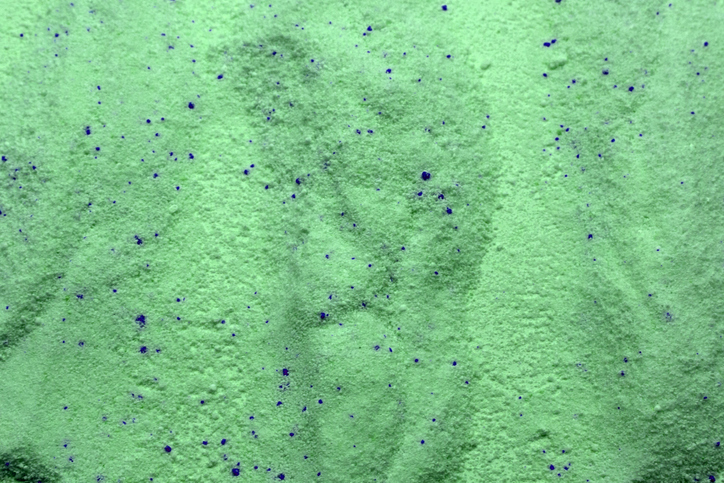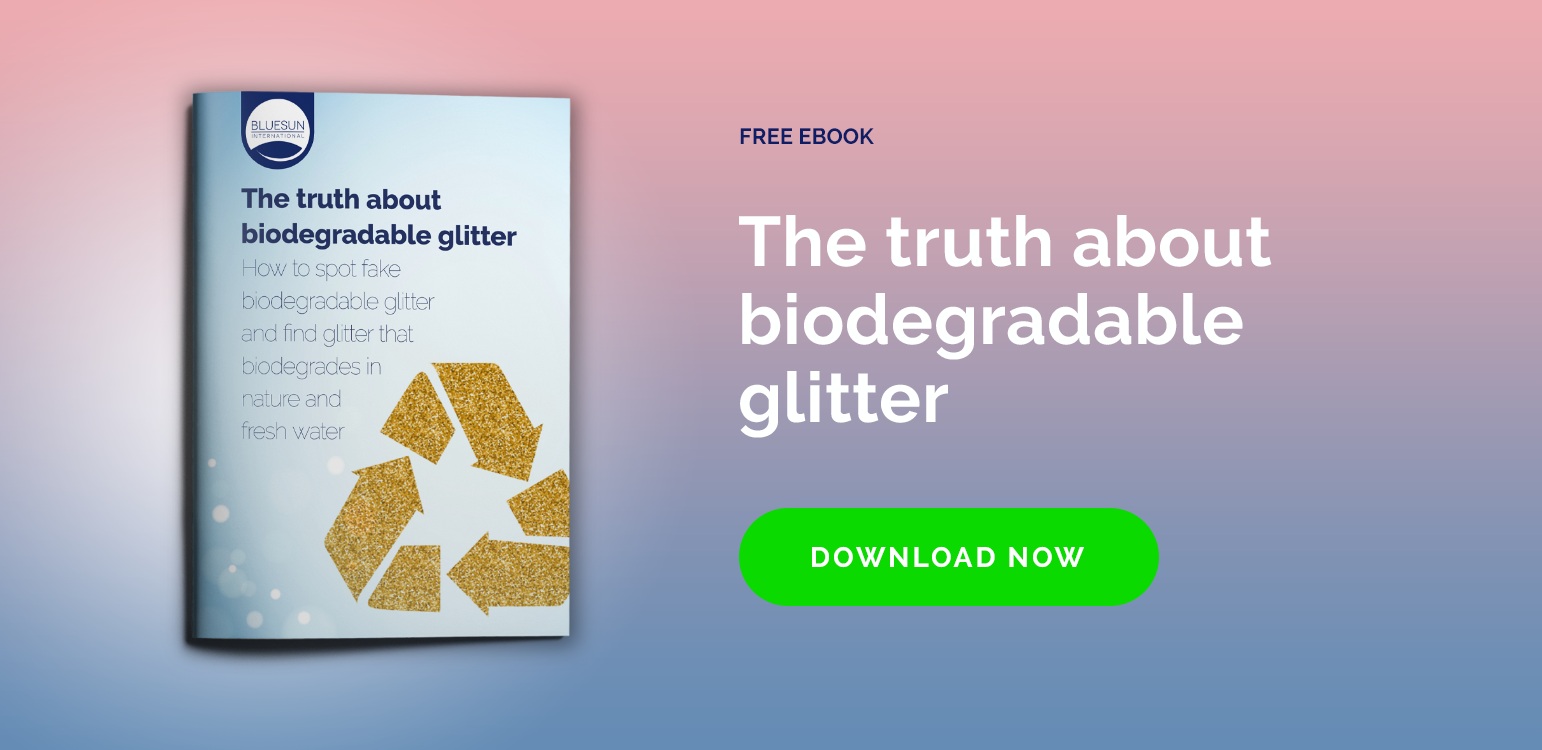As we learn how bad microplastics are for the environment many alternatives to the standard glitter are popping up, but there are also many misconceptions. Here you will know the truth about the alternatives being introduced to the market.It is obvious that conventional glitter is not good for the environment. That is why the cosmetics industry needed to refocus its efforts to create an environmentally friendly glitter; this is when many manufacturers started to claim they offer biodegradable glitter. But was that enough? Let’s take a look at what they really offer.
The damage standard glitter causes to the environment
Plastic glitter might be sparkly on your face, but it is not for the environment. People love it, but knowing the consequences of having a shiny look may cause that conscious glitter fans rethink their cosmetic choice. Remember, it’s all fun and games until it comes out of your face!
For instance, it is very common to shower off this glitter after wearing it in festivals or any special occasion, but the problem begins there. When glitter goes down the drain it easily passes through the water filtration systems and ends up in our oceans. Once it gets to the sea, the microplastics forming glitter take ages to breakdown and, therefore, contribute to the huge island of garbage floating in the marine environment.
Since water is life, if microplastics are in water they are everywhere! In our air, salt, seafood, etc. Also, micro-plastics act like a lifeboat for bacteria, so it is very likely that harmful microbes survive thanks to these plastic particles. Fishes and other sea organisms consume these tiny bits of plastic and this affects human health, especially that of pescatarians.
In order to tackle this issue, the US government banned micro-beads in December 2015. Micro-beads are made of plastic so this measure directly affected the glitter industry.
Switching to biodegradable glitter
Since glitter cannot die due to the amount of fans it has all around the world, it was just a matter of time for manufacturers to come up with a glitter that does not wreak havoc, so they created the so-called biodegradable glitter.
Biodegradable glitter can be made in many ways, but it is basically made out of anything that is natural or naturally derived. It usually works as well as a standard glitter, but without polluting the environment. When manufactured properly, an environmentally safe glitter is made from plant cellulose, which makes it a renewable source of bioglitter sparkle.
But some of these manufacturers offer a glitter that does not biodegrade, regardless of what they claim. It takes a special kind of cellulose to actually biodegrade. Only the glitter that passes the fresh water test is good for the environment. Otherwise, you may think you are helping the environment, but you may be hurting it as you would normally do with regular plastic glitter.
For example, compostable glitter does not biodegrade in the natural environment, thinking otherwise is a common misconception that is terribly damaging the environment.
Compostable glitter is not good; it does not biodegrade in nature
In order to biodegrade, compostable products need to have specific temperatures, right pressure and the proper bacteria environment. It is very unlikely to find these elements in the environment, therefore compostable glitter remains unaltered in our habitat, just like micro-plastics remain in the ocean.
So basically, compostable glitter is useless because we would have to pick up every tiny glitter particle and take it to a compostable terrain. This is crazy and impossible to achieve. Thinking that instead of washing off the glitter in our body after wearing it for any special occasion, we would take it out piece by piece to then transport it to a terrain soil is just very unrealistic, especially after getting back home with a festival hangover!
Many compostable glitters are made with cellulose acetate, which is the same ingredient used to make cigarette butts… Do you really want a cigarette ingredient on your face?
Most of us just hop in the shower to get rid of the glitter, and then we forget about it, but know that it goes down the drain directly into any water stream. Only the fresh water test can determine that a glitter is really biodegradable.
The fresh water test to prove biodegradability
If glitter consumers want to make sure they are getting a truly biodegradable product, they need to check their glitter has passed the fresh water test. Also, consumers need to check the biodegradability results show around 90% decomposition because some “biodegradable glitter” in the market only shows 10-13% in the fresh water test results.
PLA glitter is not biodegradable
Another misconception is thinking that PLA glitter does biodegrade in nature. PLA glitter is made of a polymer that contains high levels of polylactic acid molecules; for it to decompose the polymer has to be broken up with water.
This biodegradation process needs high heat and moisture, but if you through PLA in the trash it will not be exposed to the two elements needed to trigger biodegradation, so it will remain unchanged there for years, decades and centuries! It would be just like an ordinary plastic glitter.
Get the real deal!
Safe biodegradable glitter does exist, but it is hard to find. It is not next to standard glitter in the stores. Even if you Google it, you may encounter phony biodegradable products before getting to the right one.
You want to get two things when looking for an actual biodegradable glitter. Both can be found on bioglitter sparkle and bioglitter pure:
-
It actually biodegrades in the natural environment (look for fresh water test)
-
You want it to naturally biodegrade around 90% or more.
Now, before making your next glitter purchase, think of this, if you want to get an organic product, would you buy a brand that is 10% organic with the rest made of fertilizers? No, you would not! The same applies to the biodegradable glitter.
You do not want compostable glitter using same ingredient used in toxic products such as cigarette butts… Do you really want a cigarette ingredient on your face?
Only Blue Sun and Today Glitter sell a truly naturally biodegradable glitter, which has passed the fresh water test with more than 90% of biodegradability. This is the real deal!


![Free ebook: The truth about biodegradable glitter [Click here and download now]](https://no-cache.hubspot.com/cta/default/4020212/b9c13b96-3024-4b35-9af9-cbd44d84ec15.png)


